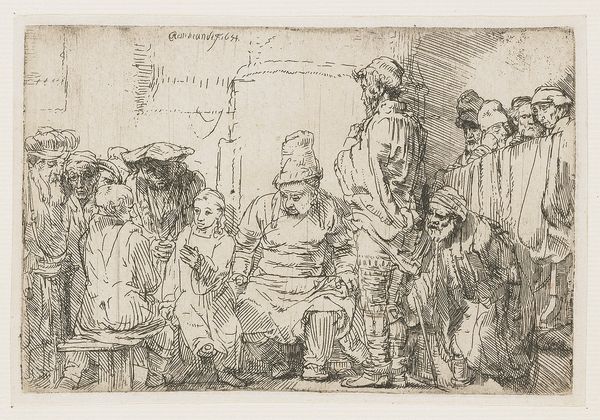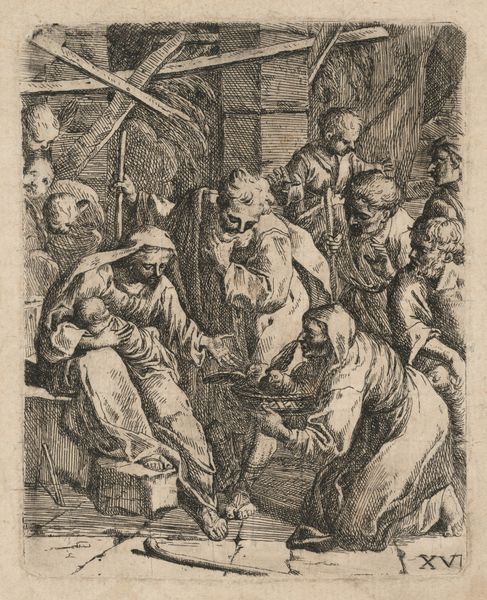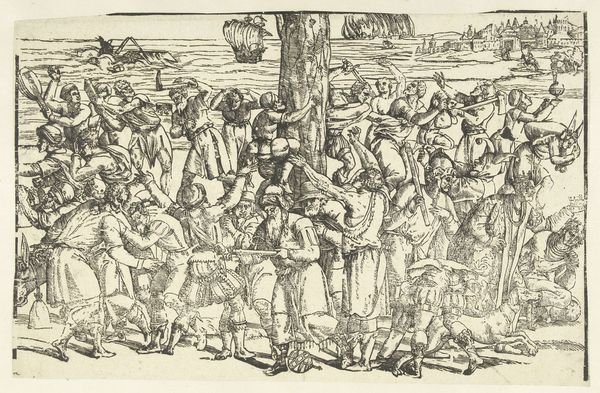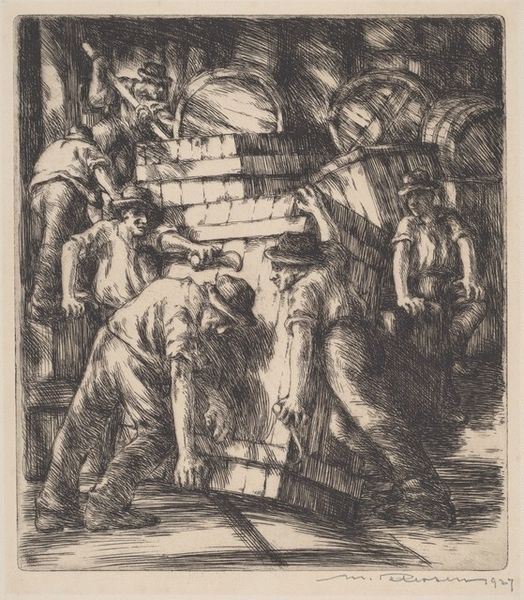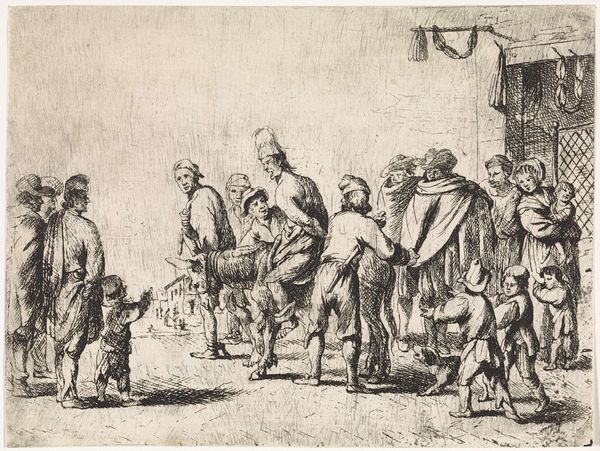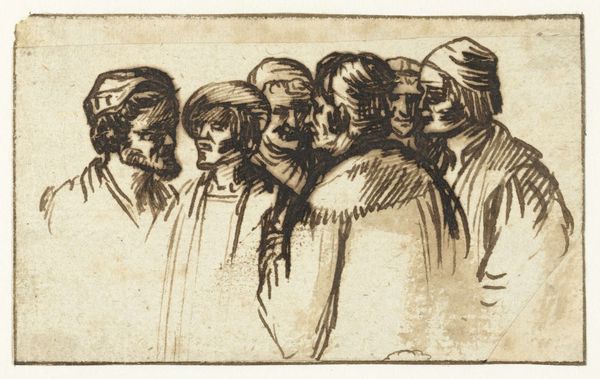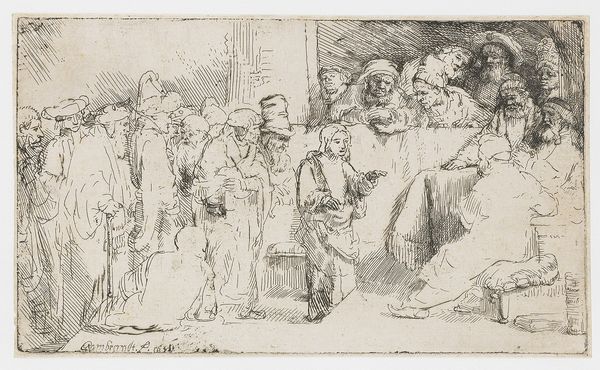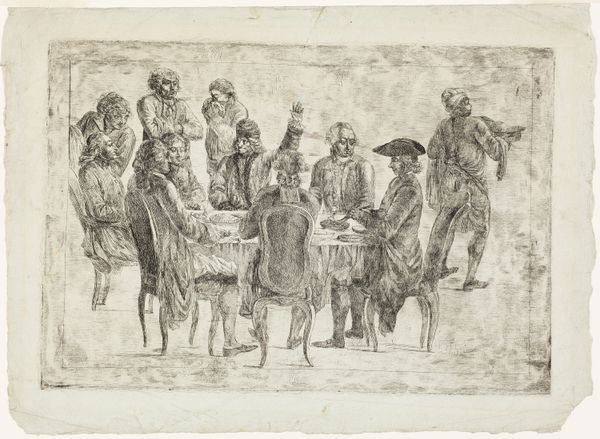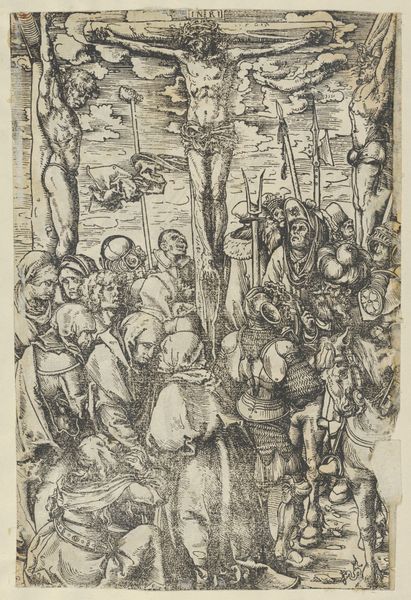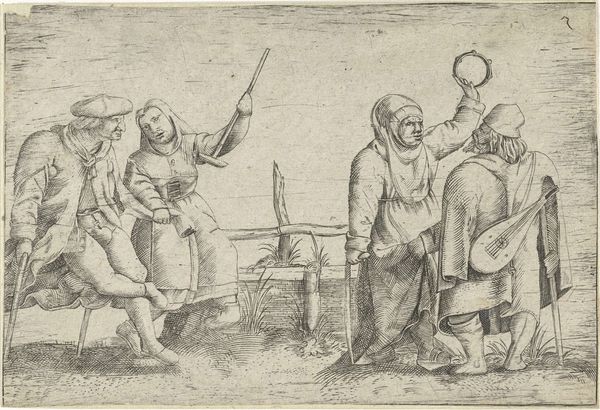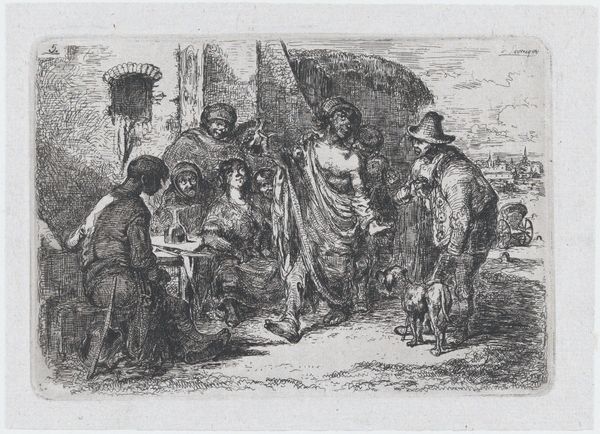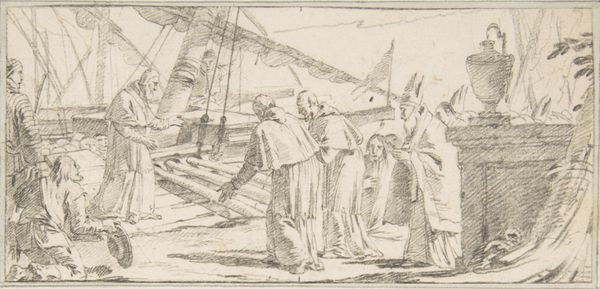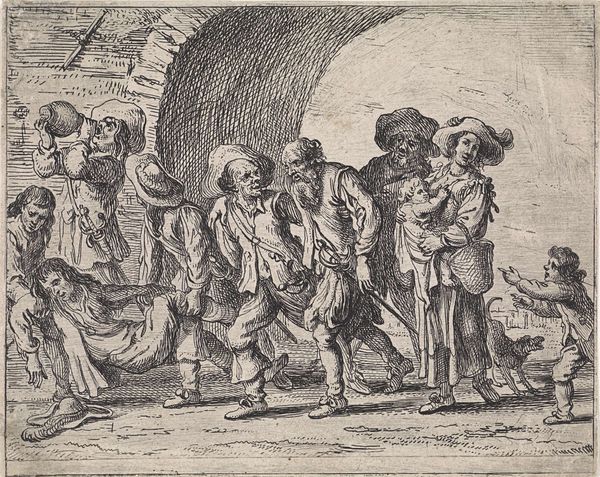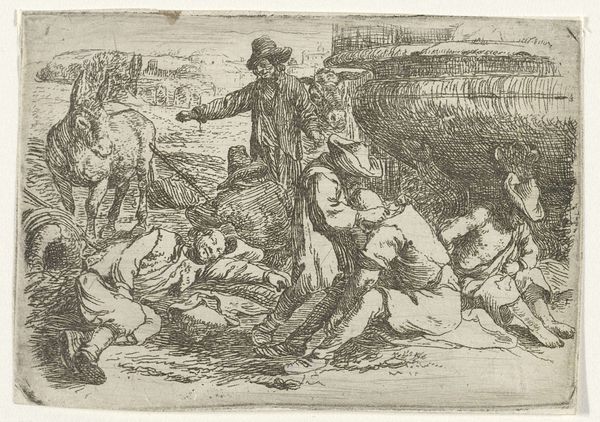
drawing, print, ink, engraving
#
drawing
#
ink drawing
#
narrative-art
# print
#
figuration
#
ink
#
history-painting
#
engraving
Copyright: National Gallery of Art: CC0 1.0
Editor: Here we have Alphonse Legros' "Archers", created in 1862 using ink engraving. It feels quite somber and heavy, even a bit oppressive. What's your interpretation? Curator: This piece strikes me as less about the individual figures, and more about the system they represent. Think about the process of engraving itself. The artist painstakingly carves into a metal plate, creating an image meant to be reproduced en masse. How does that relate to themes of labor and the control of information? Editor: That’s a fascinating perspective. I was so focused on the archers themselves I didn't even consider the implications of printmaking. Are you suggesting that Legros is making a comment about the mechanization of society? Curator: Precisely. Consider the context: mid-19th century, the rise of industrial capitalism. This engraving speaks volumes about how the production and consumption of art itself were changing. Even the 'artisan' is now subject to this change of the way value and commodities are produced and circulated. Does Legros position himself against this change, or as an element of it? Editor: So, looking at it again, it’s not just about a historical scene but about the means of replicating that scene, almost mass-producing it through the engraving. That transforms how I perceive it entirely. It moves from simply depicting authority to commenting on its dissemination. Curator: Indeed, the medium and the message become inextricably linked. It forces us to question how we consume imagery, how power is perpetuated through these accessible materials, and the impact of industrial means within artistic practices. Editor: That's truly enlightening. Thanks to you, this isn't just a scene of archers, it's a profound statement about the material conditions of art-making itself. Curator: And about our participation in perpetuating a network of labour and cultural meaning. Food for thought, certainly!
Comments
No comments
Be the first to comment and join the conversation on the ultimate creative platform.
